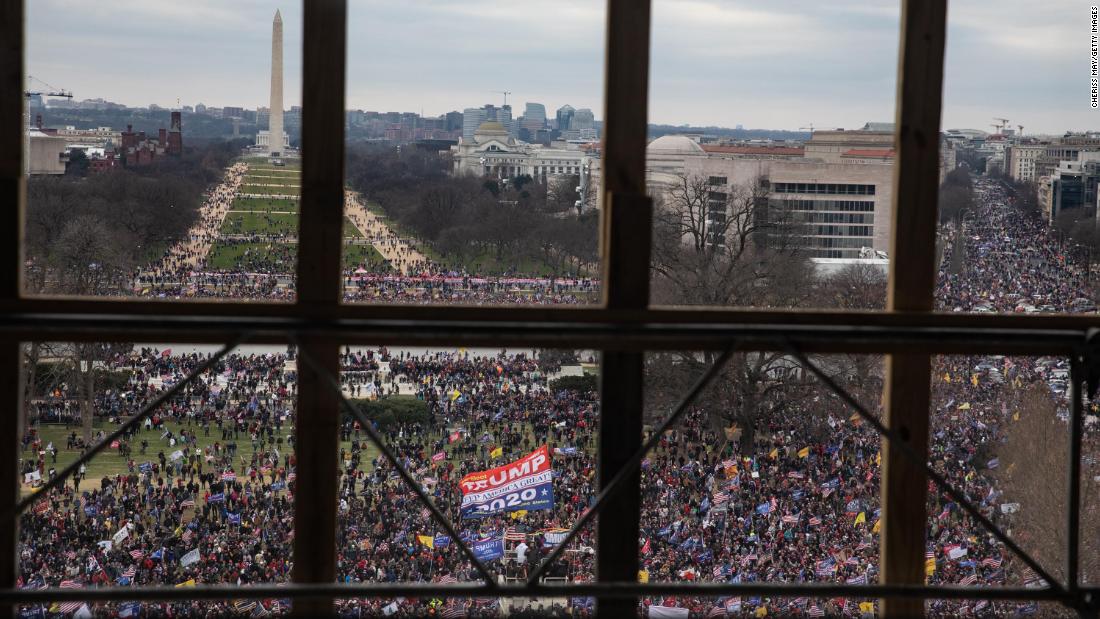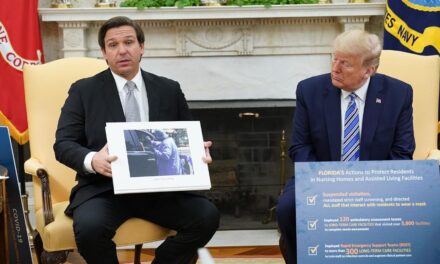
The 4 pillars to convicting alleged January 6 US Capitol rioters

(CNN)Federal prosecutors walked out of court this week with new confidence — that a Washington, DC, jury would be willing to convict participants in the January 6 US Capitol attack for serious crimes.
In the first guilty verdict from a jury related to the January 6 Capitol riot, a Texas man was convicted of obstructing the congressional proceeding and other charges. The man, Guy Reffitt, a member of the Texas Three Percenters, was hit by chemical irritants on the steps of the Capitol, then waived on others in the crowd, but did not go inside the building.
The case wasn’t about Reffitt alone. In addition to cataloging his actions, the prosecutors explained to the jury the destruction of the crowd around him on January 6 that broke into the Senate, and the effect the riot had on US Capitol Police officers who were overwhelmed. And the jury didn’t need to take the Justice Department’s words alone because the evidence was comprehensive.

Video and witnesses used together, like in the Reffitt case, are “powerful tools,” trial consultant Jill Huntley Taylor said this week. “Video makes the jurors eyewitnesses … Adding actual witnesses, particularly the Capitol Police, adds a type of commentary to what was happening in real time.”
Hundreds of other January 6 cases could see a similar approach from prosecutors if they, too, go to trial. Trials are already scheduled in the DC District Court through the end of the year, including for the far-right Oath Keepers charged with seditious conspiracy.
These are the building blocks of Reffitt’s case that may be replicated as the court tries others for their role in the riot.
Admissions on video
Some of the strongest evidence in the case against Reffitt came from his own admissions, on Zoom, on text messages and in family conversations after the riot.
At their closing arguments to the jury, prosecutors showed Reffitt explaining to his fellow Three Percenters in a video conference moment by moment how he resisted police — then cut in images of the riot itself, showing each of those standoffs.
“I stepped forward. She started pelting me with pepper balls,” Reffitt had told his friends in a video conference the prosecutors obtained. “There is Officer (Shauni) Kerkhoff pelting him with pepper balls,” prosecutor Jeff Nestler said, showing the jury video of Reffitt at the riot. “He was speaking the truth.”

After court dismissed, one juror emphasized the importance of the defendant’s admissions. “His own words played a big part in how we looked at the evidence,” the juror told Politico.
In other cases, rioters’ admissions in selfies and social media posts may be just as direct and useful to prosecutors. Some, confronted with the evidence, have already pleaded guilty.
Another Texan, Thomas Paul Conover, for example, cut a plea deal in January. He admitted to posting on social media both before and after the riot. “GOING TO WASHINGTON DC WITH BLAKELY TO JOIN THE MOB JAN 5TH CMON JOIN US,” he posted in all caps in December 2020.
While still standing on the Capitol’s steps, he recorded a video holding a beer can where he said: “I DON’T ALWAYS STORM THE CAPITOL OF THE UNITED STATES OF AMERICA. BUT WHEN I DO, I PREFER COORS LIGHT.”
Another January 6 defendant, Douglas Jensen, recorded himself in the riot as well, according to Justice Department submissions in his case so far. In his video, Jensen points at the Capitol behind him, with the crowd around him yelling. But he appears to be confused by the geography of Washington.
“This is me, touching the f**king White House … I am at the White House, just so you know,” Jensen says.
Jensen has pleaded not guilty and is headed to trial in September.
Birds’ eye view of the riot
Just like Reffitt’s own video, the Justice Department heavily relied on other angles of the riot. Hundreds of cameras were turned on as rioters approached the Capitol building and entered inside.
The Capitol Police alone has 1,600 closed-circuit surveillance cameras, according to the head of the Capitol Police’s command center, who testified against Reffitt.
And prosecutors have been strategically using video they’ve collected through subpoenas, from riot participants’ cell phones and online accounts, and from YouTube and media outlets, in several of the nearly 800 January 6 cases.
Some of the most jarring video at Reffitt’s trial came from what appeared to be a headcam that faced one of the officers Reffitt resisted on the Upper West Terrace.

The video captures infamous rioters up close, together, including the so-called QAnon Shaman, Jacob Chansley, in his horns and animal headdress and a man accused of partaking in the Proud Boys conspiracy. The group stands under scaffolding several levels up the Capitol steps, pointing and milling around. Then, the crowd rushes up a level.
“This crowd is heading up the steps where we were originally trying to hold. They are heading up to the Upper West Terrace, which I again will say there’s many access points to the Capitol building there,” Capitol Police officer Adam DesCamp explained to the jury.
Rioters on this side ultimately broke into the building through Senate windows — “that is a breach of the Capitol,” another witness from the Capitol Police testified.
Dozens of videos have been released so far, but the camera that captured Chansley (who has pleaded guilty) and others hasn’t been one of the videos circulated widely.
It’s possible it will be used in other cases.
And it raises the likelihood that the Justice Department is sitting on many more up-close angles of the violence, that could be deployed in court if needed.
Giving jurors a ‘short civics lesson’ about Congress
Prosecutors at the Reffitt trial played video of the Senate and House chambers as members of Congress began their proceedings to certify the vote, then recessed, as staff rushed around. They called witnesses too who were inside the building protecting the proceedings.
That evidence will likely need to be repeated in any other case where a defendant faces the obstruction of Congress charge, a hefty felony that carries a 20-year maximum prison sentence. The Justice Department has built many of its more serious January 6 cases, including conspiracy accusations, around this charge.
In the Reffitt case, prosecutors showed the jury congressional resolutions about how Congress would certify the election as evidence. They called it a “short civics lesson.”
They also used a US Secret Service agent who protected Pence’s family to testify to how his motorcade was moved and he and his family were taken out of the Senate chambers during the riot.
This type of testimony is on its way to becoming standard in January 6 cases. On Wednesday, a judge overseeing a separate January 6 case headed to trial later in March said that if prosecutors wanted to prove another defendant was in the restricted grounds of the Capitol illegally later that afternoon, they too would have to call a witness who could give first-hand testimony about then-Vice President Mike Pence’s whereabouts.
In the Reffitt courtroom, a lawyer for the Senate, Daniel Schwager, recounted how he and others were “under severe threat” on the Senate floor as a mob attacked the US Capitol on January 6.
“From the moment I was told protesters had breached the Capitol, I was in a state of alarm. We were in a grave situation,” Schwager testified.
In the Senate chamber, Schwager was watching over the boxes that contained the Electoral College ballots that would be counted to confirm Joe Biden’s election win, the jury saw on video.
Schwager said he wanted to make sure no one was opening the boxes or touching the ballots, even when the massive doors of the Senate were locked shut and a plain-clothed Capitol Police officer with a long gun stood in the well of the Senate to protect those inside.
The boxes and the officer with the gun were important images for prosecutors too — and they mentioned them again in their closing arguments to the Reffitt jury.
Emotions of the day also play a role
From the start of jury selection, it was clear that prosecutors would need to navigate the trauma of January 6 and strong political feelings of Washington, residents as they sought impartial jurors. Some selected for the jury had ties to Capitol Hill and the federal government, either living or working nearby, and potential jurors whose feelings about January 6 were still too strong did not make the jury.
Once the trial began, pathos in the prosecutors’ case also mattered. In the first day of government witness testimony, a Capitol Police leader broke down on the stand as she recalled the force becoming overwhelmed. And the jury heard chilling audio recordings of Capitol Police calling for help as they tried to confront the mob. “We need every single unit on the Upper West Terrace right now,” one officer shouted.
After the verdict, the Justice Department said it might call witnesses at Reffitt’s sentencing. Prosecutors have used statements from injured Capitol Police to implore judges to give severe sentencings, especially to rioters who pleaded guilty to assaulting police.
One officer who was knocked unconscious wrote about her traumatic brain injury at one January 6 defendant’s sentencing last June.
Another recovering officer said at the recent sentencing of a rioter who attacked the police line with a PVC pipe, “He will not hesitate. He will assault me and my fellow officers again and again. Just like he did on that day.”
CNN’s Hannah Rabinowitz and Marshall Cohen contributed to this report.
Source: https://www.cnn.com/2022/03/12/politics/capitol-riot-prosecutions/index.html


















